When it comes to sitemaps, choosing between HTML and XML can feel daunting. HTML sitemaps are user-friendly and great for navigation, while XML sitemaps are vital for search engines. For optimal visibility, why not use both? Boost your site’s performance today!
HTML vs XML Sitemap: Which Should You Use?
Are you trying to boost your website’s visibility and enhance its search engine ranking? If so, you’ve probably heard about sitemaps, those handy tools that help search engines understand your site’s structure. But when it comes to choosing between HTML and XML sitemaps, things can get a bit confusing. Which one should you prioritize? In this article, we’ll dive into the nitty-gritty of HTML and XML sitemaps, exploring their unique benefits and helping you decide which option is best suited for your needs. Whether you’re a seasoned web developer or just starting your online journey, understanding the differences between these two types of sitemaps could be the key to unlocking your site’s full potential. Let’s unravel the mystery and find the perfect sitemap for you!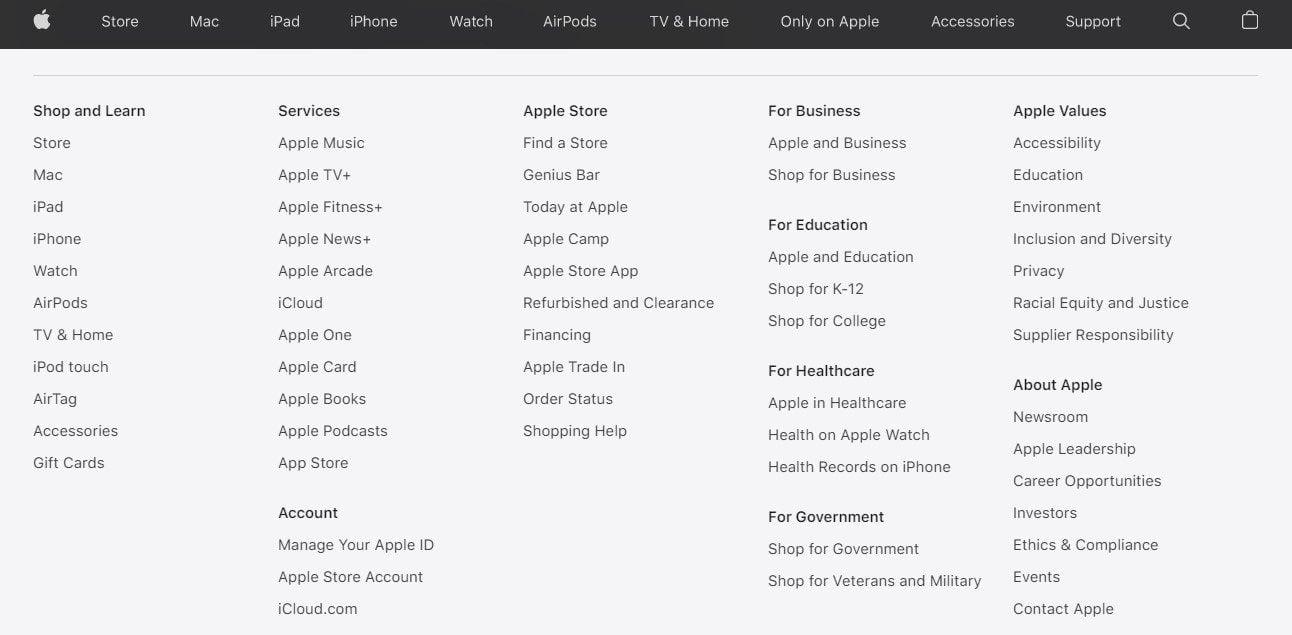
Understanding the Basics of HTML and XML Sitemaps
When it comes to optimizing your website for search engines, understanding the difference between HTML and XML sitemaps is crucial. Both serve specific purposes and cater to different audiences—one for users and the other for search engines.
HTML sitemaps are designed primarily for human visitors. They provide a structured overview of your site’s content, making it easier for users to navigate your website. Here are some of the key features:
- User-friendly: HTML sitemaps tend to be visually appealing and easy to understand.
- Navigation Aid: They help visitors find specific pages quickly, enhancing user experience.
- SEO Benefit: While primarily for users, they can also indirectly boost your SEO by reducing bounce rates.
In contrast, XML sitemaps cater specifically to search engines like Google, Bing, and others. They help these crawlers understand the structure of your site and index it more effectively. Consider the following advantages:
- Search Engine Optimization: XML sitemaps provide metadata about your pages, such as how often they get updated and their importance relative to other pages.
- Crawl Efficiency: They make it easier for search engines to discover and index new or updated content quickly.
- Large Websites: XML sitemaps are especially beneficial for larger sites with numerous pages, ensuring all content is indexed.
To give you a clearer picture, here’s a simple comparison table:
| Feature | HTML Sitemap | XML Sitemap |
|---|---|---|
| Target Audience | Website Visitors | Search Engines |
| Format | Human-readable | Machine-readable |
| Purpose | Navigation | Indexing |
| SEO Impact | Indirect | Direct |
Ultimately, the choice between HTML and XML sitemaps is not about which one is superior; it’s about how you can use both to enhance your website’s performance and visibility. By employing both types, you create a comprehensive approach to navigation for users and indexing for search engines, maximizing your SEO potential and ensuring a better experience for all visitors.
The Key Differences Between HTML and XML Sitemaps
When it comes to sitemaps, understanding the distinction between HTML and XML can significantly impact your website’s visibility and user experience. While both serve the purpose of guiding users and search engines, their formats and intended audiences differ greatly.
HTML Sitemaps are designed primarily for human visitors. They provide a user-friendly overview of your site’s structure, making it easier for users to navigate and find relevant content. An HTML sitemap typically includes links to the main pages of your website, organized in a clear and logical manner. The simplicity of an HTML sitemap enhances usability, allowing visitors to understand the hierarchy and relationships between various sections of your site.
On the other hand, XML Sitemaps cater to search engines rather than users. These sitemaps provide a structured format that search engine crawlers can easily read and interpret. An XML sitemap contains essential metadata about each page, such as:
- Page URLs
- Last modified date
- Change frequency
- Priority level
This information helps search engines index your pages more efficiently, ensuring that they understand the importance and timeliness of your content.
| Feature | HTML Sitemap | XML Sitemap |
|---|---|---|
| Target Audience | Website Visitors | Search Engines |
| Format | User-Friendly | Machine-Readable |
| Content Type | Links to Pages | Page Metadata |
| Purpose | Improve Navigation | Enhance Indexing |
While both types of sitemaps can be beneficial, the choice largely depends on your goals. If enhancing user experience and navigation on your site is a priority, then an HTML sitemap is invaluable. Conversely, if your primary focus is on improving your site’s SEO and ensuring that search engines can crawl your content effectively, an XML sitemap is the way to go.
Ultimately, for optimal performance, consider implementing both types on your website. This dual approach can enhance user engagement while also boosting your site’s discoverability in search engine results.
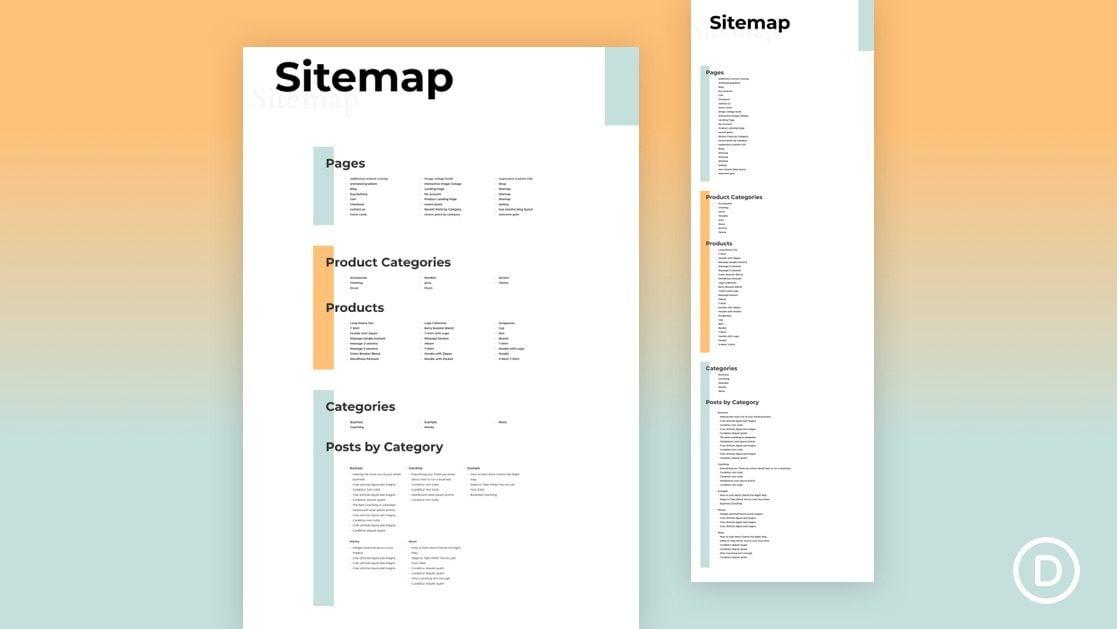
Why HTML Sitemaps Are Great for User Experience
When it comes to enhancing user experience, HTML sitemaps shine brightly. They serve as a crucial navigation aid for visitors, making it easy for them to find what they’re looking for on your website. Unlike XML sitemaps, which are designed primarily for search engines, HTML sitemaps cater specifically to human users.
Here are several reasons why HTML sitemaps are beneficial:
- Improved Navigation: An HTML sitemap allows users to see the structure of your site at a glance. This overview helps them quickly locate specific sections or pages without having to dig through menus or rely on search bars.
- Enhanced Accessibility: For users who may have difficulty navigating complex websites, an HTML sitemap provides a straightforward path to the desired content. This inclusivity can lead to increased visitor satisfaction.
- Reduced Bounce Rates: When users can easily find the information they need, they’re less likely to leave your site. An effective HTML sitemap can significantly lower bounce rates and encourage users to explore more pages.
In addition to these user-centric benefits, HTML sitemaps also contribute positively to SEO. While they primarily serve users, search engines can also leverage this clear structure to index your site more effectively. When bots crawl your site, they can gather information about the hierarchy and relationships between pages, potentially improving their rankings in search results.
| Feature | HTML Sitemap | XML Sitemap |
|---|---|---|
| Target Audience | Users | Search Engines |
| Navigation Aid | Yes | No |
| Search Engine Optimization | Indirectly | Directly |
| Design Flexibility | High | Low |
Ultimately, integrating an HTML sitemap into your website not only streamlines user navigation but also creates a more enjoyable browsing experience. By prioritizing user needs, you’re not just improving your website’s usability; you’re also building a stronger and more loyal audience.
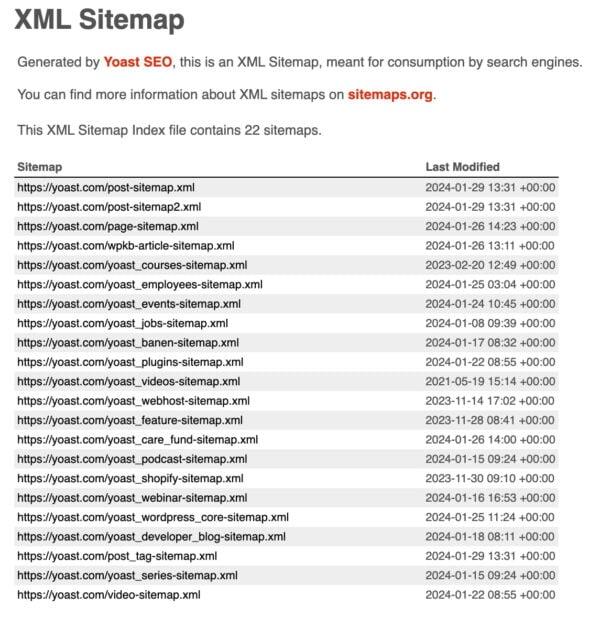
The Technical Benefits of XML Sitemaps for SEO
When it comes to optimizing your website for search engines, an XML sitemap can serve as a powerful tool in your SEO arsenal. Unlike HTML sitemaps, which are designed for human visitors, XML sitemaps provide a structured format specifically tailored to help search engines crawl and index your site more efficiently. This technical advantage can lead to improved visibility and performance in search results.
One of the primary benefits of XML sitemaps is their ability to provide search engines with important metadata about your pages. This includes:
- Last Modified Dates: Indicate when a page was last updated, helping search engines prioritize indexing.
- Change Frequency: Suggest how often a page is likely to change, guiding crawlers on how frequently to revisit.
- Priority Levels: Allow you to specify the importance of certain pages relative to others within your website.
Moreover, XML sitemaps can support the inclusion of various content types, such as images, videos, and news articles. By offering a comprehensive overview of your website’s content, you enhance the chances of these elements being discovered and indexed. This is particularly beneficial for sites with rich media, as it ensures that search engines understand the significance of these assets.
Another notable advantage lies in the way XML sitemaps facilitate the discovery of new and updated content. For websites that are frequently updated, having an XML sitemap ensures that search engines are promptly notified about changes, which can lead to:
- Faster indexing of new pages.
- Quicker updates to search engine results.
In terms of technical structure, it’s important to ensure your XML sitemap adheres to the correct format. A well-structured sitemap should follow these essential criteria:
| Element | Description |
|---|---|
| URL Tags | Each URL should be enclosed in |
| Loc | Specify the URL of the page using |
| Lastmod | Use |
Lastly, integrating your XML sitemap with Google Search Console can provide invaluable insights into how well your site is indexed. You can monitor indexing status, discover crawl errors, and optimize your sitemap continuously to ensure it meets evolving SEO best practices. By utilizing an XML sitemap, you are not just enhancing the technical SEO of your site but also paving the way for improved organic traffic and user engagement.
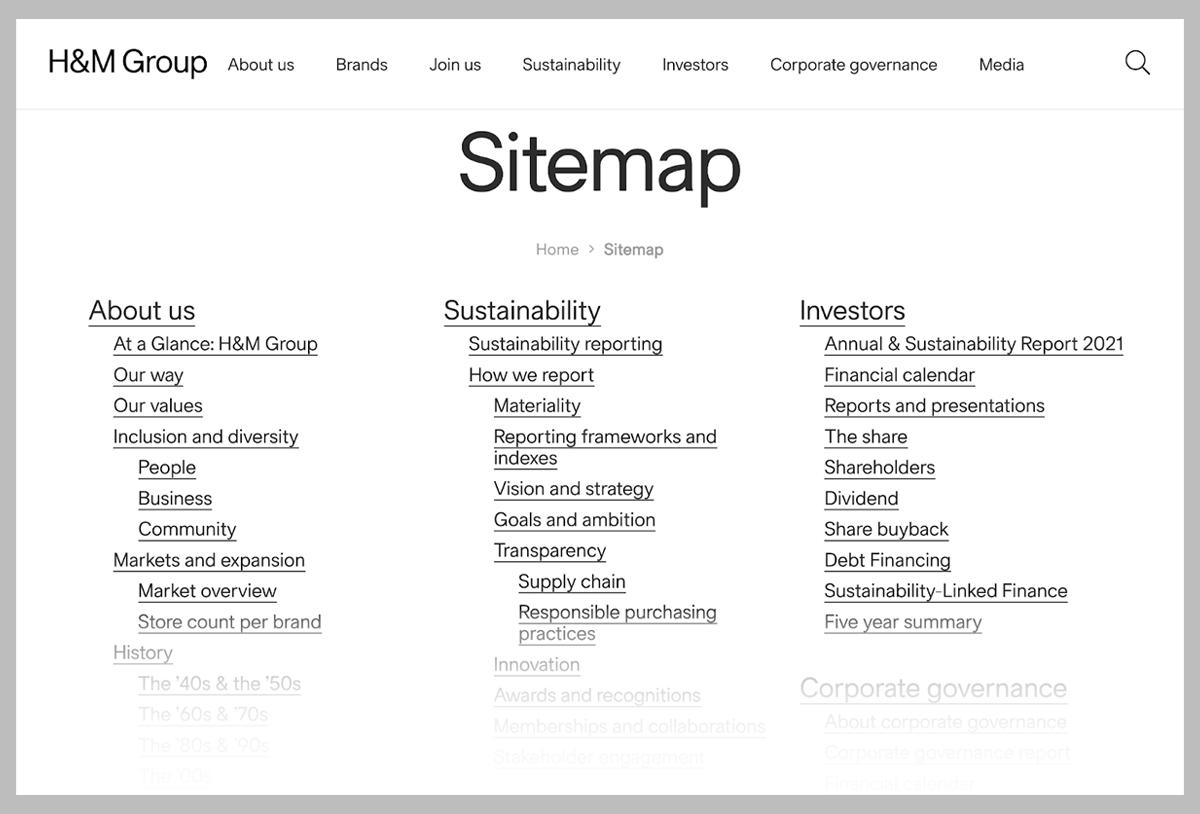
When to Choose an HTML Sitemap for Your Website
Choosing an HTML sitemap for your website can be a strategic decision that significantly enhances user experience and SEO performance. An HTML sitemap is primarily designed for human visitors; it provides a clear and organized layout of your site’s structure. This can be particularly beneficial if your website has a large number of pages or complex navigation. Here are some key reasons to consider implementing an HTML sitemap:
- User-Friendly Navigation: An HTML sitemap allows users to quickly find the content they are looking for without having to navigate through multiple layers of menus. This can reduce bounce rates and increase the time users spend on your site.
- Improved Accessibility: For visitors who may have difficulty using traditional navigation menus, an HTML sitemap provides an alternative method to access content, making your site more inclusive.
- Enhanced SEO Signals: Search engines appreciate sites that are well-structured and easy to navigate. An HTML sitemap can help ensure that all your pages are discoverable, sending positive signals to search engines about the organization of your content.
It’s important to note that while HTML sitemaps are beneficial for users, they also serve as a valuable tool for search engine crawlers. By presenting a clear overview of the site’s structure, you can aid crawlers in indexing your pages more effectively. This is particularly important for larger websites with numerous categories and subcategories.
Here are some scenarios where an HTML sitemap might be particularly advantageous:
| Situation | Benefit of HTML Sitemap |
|---|---|
| Launching a New Site | Helps users explore all available content from the start. |
| Complex Site Structures | Facilitates easier navigation across multiple categories. |
| High Volume of Content Updates | Ensures all new pages are quickly discoverable by users. |
| Targeting Diverse Audiences | Makes it easier for different user segments to find relevant information. |
if you’re seeking to enhance the user experience and support search engine optimization, an HTML sitemap can be a powerful addition to your website. It not only improves the accessibility of your content but also signals to search engines that your site is organized and user-centered. Whether you’re launching a new site or have an existing one that requires better usability, an HTML sitemap is worth considering for its significant advantages.
The Case for XML Sitemaps in Complex Sites
For complex websites with extensive content, having an XML sitemap is not just advantageous; it’s essential. While HTML sitemaps serve their purpose for user navigation, XML sitemaps specifically cater to search engines, ensuring they can efficiently crawl and index your site. This distinction is critical when your site has multiple layers of content, various categories, or a large number of pages.
Here are some compelling reasons to consider XML sitemaps:
- Enhanced Crawl Efficiency: Search engines can prioritize the most important pages, allowing them to navigate vast structures with ease.
- Indexing New Content Quickly: If you frequently update or add new pages, an XML sitemap can alert search engines to these changes, helping them index content faster.
- Handling Dynamic Content: For sites that use dynamic content generation, XML sitemaps provide a clear structure for crawlers, assisting them in understanding the relationships between different pages.
- Granular Control: You can include metadata for each URL, specifying change frequency, priority, and last modification dates—crucial for large, complex sites.
Moreover, when dealing with a broad array of content types—such as blog posts, products, landing pages, and resources—an XML sitemap allows you to categorize and organize these effectively. This segmentation can help search engines prioritize which pages to crawl first, leading to better visibility in search results.
Consider the following table that highlights the differences between HTML and XML sitemaps in the context of complex websites:
| Feature | HTML Sitemap | XML Sitemap |
|---|---|---|
| User-Friendly | Yes | No |
| Search Engine Focused | No | Yes |
| Supports Metadata | No | Yes |
| Best for Navigation | Yes | No |
| Best for Indexing Updates | No | Yes |
In a digital landscape where user experience and search engine optimization are paramount, leveraging both HTML and XML sitemaps can be a game-changer for complex websites. While HTML sitemaps enhance user navigation, XML sitemaps ensure your valuable content is not just seen but indexed effectively by search engines. By taking advantage of both options, you set your website up for success, ensuring it remains accessible and appealing to both users and search engines alike.
Combining HTML and XML Sitemaps for Optimal Results
Integrating both HTML and XML sitemaps can significantly enhance your website’s visibility and accessibility. By combining these two formats, you cater to both search engine bots and human users, optimizing your site’s structure for maximum effectiveness.
HTML sitemaps serve as user-friendly navigational tools. They present a clear layout of your website’s content, allowing visitors to easily find what they’re looking for. Here are a few benefits of using an HTML sitemap:
- User Experience: A well-structured HTML sitemap enhances the usability of your site, helping visitors navigate effortlessly.
- SEO Boost: Search engines appreciate the clear hierarchy, potentially improving your rankings.
- Reduced Bounce Rates: Visitors are less likely to leave your site when they can quickly find the information they need.
On the other hand, XML sitemaps are primarily designed for search engine crawlers. They provide a backend roadmap of your site, listing all the URLs along with additional metadata. Here’s why you should include an XML sitemap:
- Crawler Efficiency: XML sitemaps help search engine bots discover and index new or updated content faster.
- Priority and Frequency: You can specify the importance of pages and how frequently they change, guiding search engines on what to prioritize.
- Comprehensive Coverage: XML sitemaps can include pages that might be hard to find through regular navigation.
When you combine both sitemaps, you ensure a comprehensive approach to your site’s SEO strategy. Consider implementing the following steps:
- Create a clear and concise HTML sitemap accessible from your footer.
- Generate an XML sitemap and submit it to search engines like Google and Bing via their webmaster tools.
- Regularly update both sitemaps to reflect new content and site structure changes.
To illustrate the differences between the two, here’s a simple comparison:
| Feature | HTML Sitemap | XML Sitemap |
|---|---|---|
| Target Audience | Website visitors | Search engines |
| Format | User-friendly HTML | Structured XML |
| Purpose | Navigation aid | Indexing support |
leveraging the strengths of both HTML and XML sitemaps creates a robust foundation for your website’s SEO strategy, leading to better user engagement and improved search engine rankings.
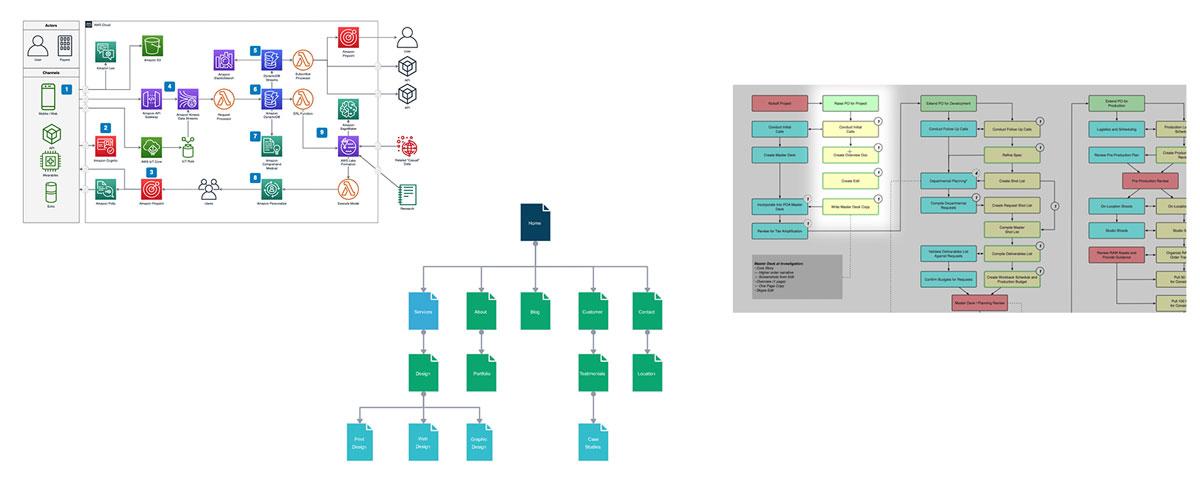
Best Practices for Implementing Sitemaps on Your Site
When it comes to implementing sitemaps, understanding the differences and best uses for both HTML and XML sitemaps is crucial for optimizing your website’s visibility. Each type serves a different purpose and can enhance your site’s performance in unique ways.
HTML Sitemaps are primarily designed for users. They provide a user-friendly interface that allows your visitors to navigate your website with ease. Here are some best practices for implementing HTML sitemaps:
- Organize logically: Structure your HTML sitemap in a way that mirrors your site’s hierarchy. This helps users find what they need quickly.
- Keep it updated: Regularly update your HTML sitemap to reflect new content or changes in your website structure.
- Enhance accessibility: Make sure your HTML sitemap is linked from your footer or main navigation menu to ensure it’s easily accessible.
On the other hand, XML Sitemaps are tailored for search engines. They help search engines discover and index your web pages effectively. Here are key tips for XML sitemap optimization:
- Include only important pages: Ensure your XML sitemap includes URLs that you want search engines to index. Exclude duplicate, low-quality, or irrelevant pages.
- Use proper formatting: Validate your XML sitemap to make sure it adheres to XML standards, ensuring search engines can read it without issues.
- Submit to search engines: After creating your XML sitemap, don’t forget to submit it through tools like Google Search Console for better indexing.
| Type | Purpose | Best For |
|---|---|---|
| HTML Sitemap | User navigation | Visitors seeking information |
| XML Sitemap | Search engine indexing | Search engines and bots |
utilizing both sitemaps can significantly enhance your website’s user experience and search engine optimization. An effective strategy combines the strengths of both HTML and XML sitemaps, providing a seamless experience for users while ensuring search engines can index your content efficiently.
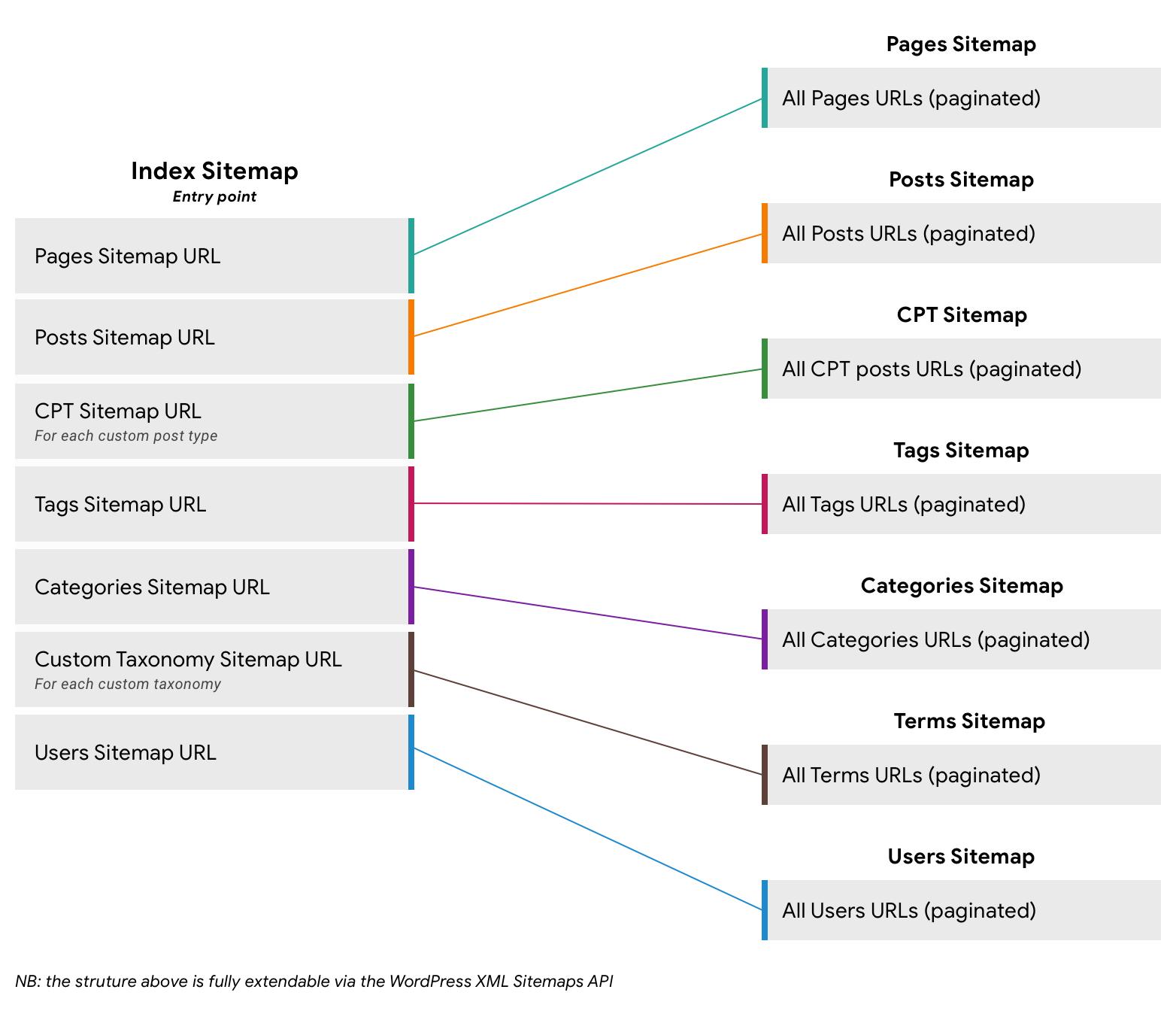
Common Myths About Sitemaps Debunked
When it comes to sitemaps, many misconceptions can cloud the waters, leading webmasters and SEO enthusiasts to make uninformed decisions. One of the most common myths is that if you have an HTML sitemap, you don’t need an XML sitemap. In reality, both serve distinct purposes and complement each other. An HTML sitemap improves user navigation, while an XML sitemap is essential for search engines to crawl and index your site efficiently.
Another myth is that submitting a sitemap guarantees better rankings in search engine results. While having a sitemap does enhance your site’s visibility to search engines, it does not directly influence your rankings. What it does is ensure that search engines are aware of all your pages, especially the less accessible ones. This can lead to improved indexing, which is critical for SEO success.
Some believe that creating a sitemap is a one-time task. This is far from the truth! As your website evolves, new content is added, and changes are made, it’s essential to regularly update your sitemaps. Failure to do so can confuse search engines and lead to outdated or incomplete indexing of your site. A dynamic sitemap that reflects your current content is crucial for maintaining search visibility.
Additionally, there’s a notion that having a large number of links in your sitemap is detrimental. However, a well-structured sitemap can handle thousands of URLs without issues. The key is to ensure that it adheres to search engine guidelines, including the limitation of 50,000 URLs per sitemap file and a maximum file size of 50MB when uncompressed. Here’s a simple table to clarify:
| Limitations | XML Sitemaps |
|---|---|
| Maximum URLs | 50,000 |
| File Size | 50MB uncompressed |
Lastly, many believe that the inclusion of a sitemap is only beneficial for larger sites. In truth, even small websites can gain significant advantages from having a sitemap. It helps search engines to discover all pages, especially if your site has a deep hierarchy or is newly launched. No site is too small to benefit from this essential SEO tool!
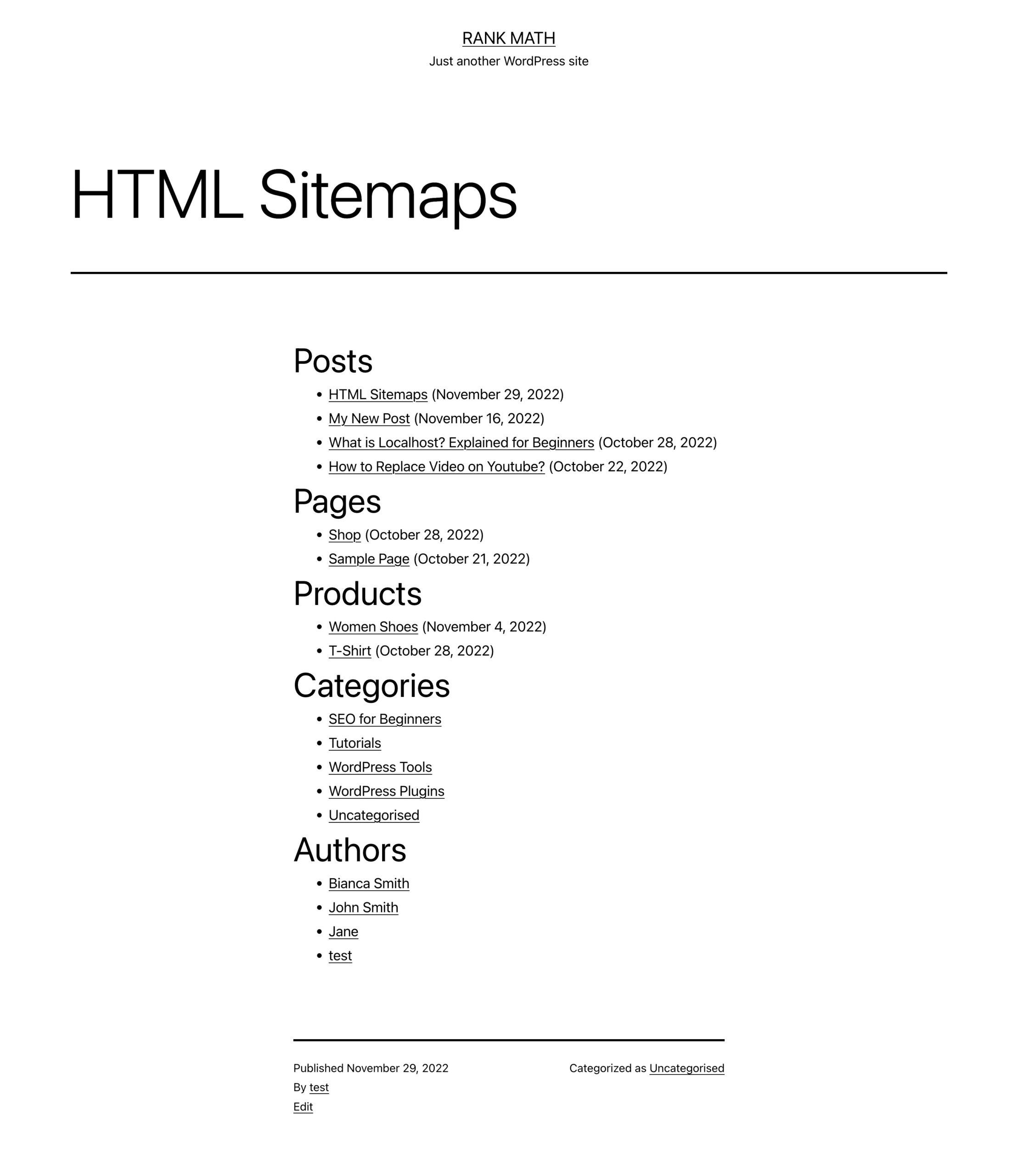
Making the Right Choice: A Quick Decision Guide
When it comes to optimizing your website for search engines, choosing between an HTML sitemap and an XML sitemap can be crucial for your site’s visibility. Both serve distinct purposes and cater to different audiences. Here’s a breakdown to help you make an informed decision on which one to implement.
HTML Sitemap:
An HTML sitemap is designed primarily for human visitors. It provides a user-friendly layout that allows users to easily navigate through your website’s content. Here are some key benefits:
- Improved User Experience: HTML sitemaps help users find what they are looking for without excessive clicking.
- Increased Engagement: By making it easy for visitors to explore your site, you can encourage longer visits and lower bounce rates.
- SEO Boost: Search engines also appreciate well-structured HTML sitemaps, which can lead to better indexing of your pages.
XML Sitemap:
On the other hand, an XML sitemap is primarily for search engines. It provides a structured format that’s easy for crawlers to read and understand your site’s hierarchy and content. Consider the following:
- Enhanced Crawlability: XML sitemaps help search engines discover new pages and updates quickly.
- Priority and Frequency: You can indicate the importance of various pages and how often they are updated, giving search engines more context.
- Optimized for Rich Results: It can improve your chances of appearing in rich snippets if you include relevant metadata.
Ultimately, your choice will depend on your specific goals. If you’re seeking to enhance user navigation, an HTML sitemap is the way to go. However, if your focus is on maximizing search engine visibility, an XML sitemap should take precedence. Many successful websites choose to implement both, leveraging the strengths of each format. This dual approach ensures that both users and search engines can easily navigate and understand your content.
| Feature | HTML Sitemap | XML Sitemap |
|---|---|---|
| User-Focused | ✔️ | ❌ |
| Search Engine-Focused | ❌ | ✔️ |
| Improves User Engagement | ✔️ | ❌ |
| Helps Index New Content | ❌ | ✔️ |
consider your audience and your objectives when deciding between an HTML or XML sitemap. Each type plays a pivotal role in your overall SEO strategy, and using both can be a powerful way to enhance your site’s performance.
Frequently Asked Questions (FAQ)
Q&A: HTML vs XML Sitemap: Which Should You Use?
Q1: What’s the difference between an HTML sitemap and an XML sitemap?
A1: Great question! An HTML sitemap is designed for human visitors. It’s a webpage that lists all the pages on your site, making it easy for users to navigate. On the other hand, an XML sitemap is primarily for search engines. It’s a file that helps search engines like Google understand the structure of your site and discover new content more efficiently.
Q2: Why would I need an HTML sitemap for my website?
A2: An HTML sitemap is a fantastic tool for enhancing user experience. Imagine a visitor landing on your site and wanting to find something specific—an HTML sitemap allows them to see a clear overview of your content. This can reduce bounce rates and encourage deeper exploration, ultimately leading to higher engagement and conversions. Plus, it can boost your site’s SEO by making it easier for search engines to crawl your pages!
Q3: What are the benefits of having an XML sitemap?
A3: An XML sitemap is essential for SEO! It tells search engines exactly what pages you want indexed, how often they change, and their importance relative to other pages on your site. This is especially useful for larger sites or those with dynamic content. It ensures that search engines don’t miss critical updates, which can improve your site’s visibility in search results.
Q4: Do I really need both an HTML and an XML sitemap?
A4: Yes, having both is a smart strategy! An HTML sitemap enhances the user experience while an XML sitemap caters to search engine crawlers. Think of it this way: your audience deserves an easy way to navigate your content, and search engines need the best signals to index your site effectively. By providing both, you’re covering all bases!
Q5: How do I create an XML sitemap?
A5: Creating an XML sitemap can be simple! If you’re using a platform like WordPress, there are plugins like Yoast SEO that can generate one for you automatically. For other sites, you can use online sitemap generators or create one manually using XML format guidelines. Once created, make sure to submit it to Google Search Console to ensure your site gets indexed properly.
Q6: What about maintaining these sitemaps? Is it a hassle?
A6: Not at all! Most CMS platforms will update your sitemaps automatically as you add or remove content. For XML sitemaps, just ensure that any significant changes to your site’s structure are reflected. With an HTML sitemap, a quick review can help you keep it accurate. Regular maintenance is key, but it’s usually straightforward!
Q7: Can having sitemaps improve my search rankings?
A7: Absolutely! While just having a sitemap won’t guarantee higher rankings, it significantly improves your site’s crawlability. By helping search engines discover and index your content properly, you increase the chances of your pages appearing in search results. A well-structured site is more likely to rank higher, so it’s a crucial piece of your SEO puzzle!
Q8: Any final thoughts on which sitemap to prioritize?
A8: If you had to choose one, start with an XML sitemap, especially if you’re focused on SEO. But don’t neglect the user experience—an HTML sitemap can complement your SEO efforts by guiding visitors and keeping them engaged. Ultimately, using both sitemaps creates a comprehensive strategy that benefits both your users and your search engine rankings. So, why not have the best of both worlds?
Future Outlook
when it comes to choosing between HTML and XML sitemaps, it really boils down to your website’s goals and audience. If you’re looking to enhance user experience and provide easy navigation for your visitors, an HTML sitemap might be your best bet. On the other hand, if your primary focus is on optimizing search engine visibility and helping crawlers understand your site structure, then an XML sitemap is essential.
But why stop at just one? Many savvy webmasters choose to implement both! By doing so, you cater to both human visitors and search engines, maximizing your website’s potential.
Ultimately, the right choice will depend on your specific needs, but one thing is clear: a well-structured sitemap can make a world of difference in how your site is perceived and indexed. So think about your strategy, evaluate your audience, and take that crucial step toward a more organized and accessible website. Your users—and your search rankings—will thank you for it! Happy optimizing!





